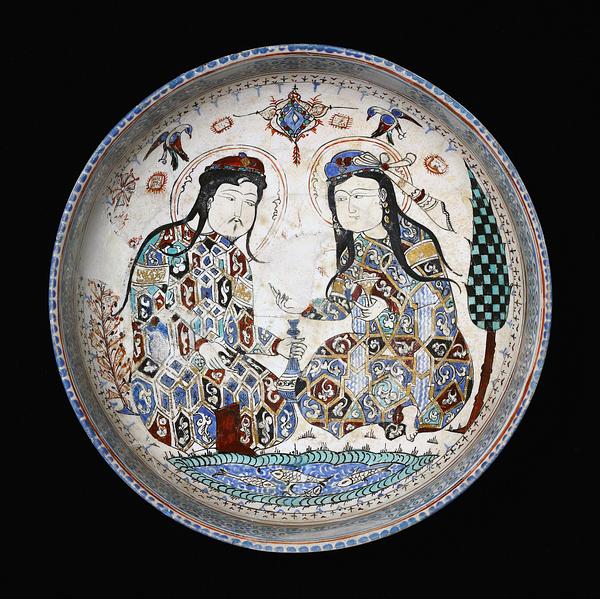Fritware bowl, with polychrome decoration and gold leaf in and over an opaque, white glaze. Minai type
Iran, Kashan; c. 1200
H: 8.5; Diam: 21.7 cm
Minai means enamel in Persian, and the term refers to this type of pottery’s colorful decoration, which lies both in and over the glaze, here further enriched with gold. Like lustreware, it had to be fired twice and was consequently costly.
The finest-quality minai features the most exquisite painting of the period – elegant, refined art for the upper class, masterfully composed, innovative, and coloristically pleasing. The figures are the Turkish-Mongol type that is found in all the Persian art of the day and reflected the ruling class’s ethnicity.
Inv. no. 34/1999
Published in:
Drouot-Richelieu, Paris, 14-15/4-1997, lot 42;
Kjeld von Folsach: Art from the World of Islam in The David Collection, Copenhagen 2001, cat.no. 166;
Kjeld von Folsach: “A number of pigmented wooden objects from the Eastern Islamic worlds” in Journal of the David Collection, 1, 2003, p. 84, fig. 15;
Sheila S. Blair and Jonathan M. Bloom (eds.): Cosmophilia. Islamic Art from the David Collection, Copenhagen, McMullen Museum of Art, Boston College, Boston 2006, cat.no. 37;
Kjeld von Folsach, Joachim Meyer: The Human Figure in Islamic Art – Holy Men, Princes, and Commoners, The David Collection, Copenhagen 2017, cat.no. 11;
